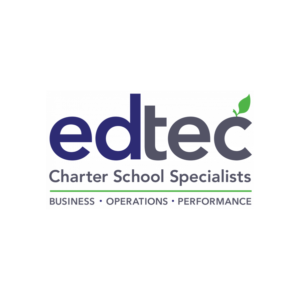by Guest Author
 Navigating enrollment-based revenue shortfalls for charters can be a daunting task, especially in today’s uncertain times. As experienced charter school professionals, we understand the importance of this topic and its impact on our schools. This article will shed light on the key factors that contribute to enrollment-based revenue shortfalls and provide strategies to address them. Let’s explore this unfortunate phenomenon and take a stab at illuminating the path forward to make this a rare occurrence in Georgia.
Navigating enrollment-based revenue shortfalls for charters can be a daunting task, especially in today’s uncertain times. As experienced charter school professionals, we understand the importance of this topic and its impact on our schools. This article will shed light on the key factors that contribute to enrollment-based revenue shortfalls and provide strategies to address them. Let’s explore this unfortunate phenomenon and take a stab at illuminating the path forward to make this a rare occurrence in Georgia.
What happened?!
Enrollment-based revenue shortfalls occur when charter schools experience a decline in student enrollment, resulting in a decreased stream of funding. This typically occurs sometime during the middle of the school’s fiscal year and after the school has submitted their October student counts. These shortfalls can be caused by various factors, such as demographic shifts, competition from other schools, or changes in parental preferences.
 What are the consequences?
What are the consequences?
The consequences of these shortfalls are significant, as they directly affect a school’s ability to provide quality education and sustain operational costs. Understanding the reasons behind these shortfalls is crucial for charter school leaders to effectively address the issue, so we’ll work through an example for a new school. Let’s say that your new school’s enrollment projection was 200 but you only had 100 students during the October count. Let’s assume each student accounts for $10,000 in revenue. This varies widely in GA but $10,000 is an easy rough estimate to use for some quick math:
Projected funding: 200 students x $10,000/student = $2,000,000
Actual funding: 100 students on October count day x $10,000/student = $1,000,000
Projected monthly allocation: $2,000,000/12 months = $167,000
In the example above, the revenue shortfall for the school will be around $1,000,000. And since the school was funded at $2,000,000/year and $167,000/month for the first six months of the year, the $1,000,000 correction will result in the school’s monthly allocation dropping to $0/month. Yes, $0! This is because the school already received their full allocation for the students they had on October count day by the end of December.
Remember, the example above is for a new school. An existing school would only be responsible for projected additional students beyond the school’s student levels at the end of the previous school year.
What to do when it is too late (after the October count)?
Managing enrollment-based revenue shortfalls requires a comprehensive budgetary plan. Charter school leaders must carefully assess financial gaps and devise strategies to address them without compromising the quality of education. Of course, this sounds a lot easier than it is.
Despite this, implementing cost-saving measures while maintaining a supportive and enriching learning environment is crucial during challenging times. Charter school leaders should collaborate closely with their board, staff, parents, and the community to address the issue collectively. Working together, schools can explore cost-saving initiatives and fundraising opportunities to support the school financially.
What can you do to avoid this happening?
To tackle enrollment-based revenue shortfalls, charter school leaders must be able to recognize the signs of potential revenue challenges early on. Key indicators may include declining enrollment trends, student retention issues, and shifts in community demographics. It’s important to conduct a thorough analysis, including historical enrollment figures, student retention rates, and demographic data to pinpoint the specific causes of revenue shortfalls and provide a solid foundation for effective solutions.
Charter leaders should also stay focused on creating the best possible educational program and raising awareness about their school, especially at a time when parents do not settle and are willing to continue to search for better educational options. Understanding your community’s needs and desires can help here. One way to achieve this is by hosting focus groups with current and prospective parents and students to understand what is important to them and what their ideal learning environment looks like. To raise brand awareness, make sure you are clearly and consistently communicating your schools’ mission and values. In addition, consider approaching community partners such as churches and local shops to inquire about opportunities to participate in events or simply hang up flyers to promote your school and share your stories.
By focusing on strengthening their programs and stakeholder relations, charter leaders can proactively minimize the impact of revenue shortfalls. And remember that you can always work to increase your enrollment prior to the October count.
Ask for help!
As a charter school leader, it is beneficial to consider consulting experts and organizations specializing in charter schools such as the GCSA. These professionals provide valuable guidance and support in areas such as financial management, enrollment strategies, and operational efficiency. By leveraging external expertise, you’ll be able to make informed decisions and access additional resources to overcome enrollment-based revenue shortfalls.
In conclusion, charter school leaders must proactively analyze, plan, and engage to successfully navigate enrollment-based revenue shortfalls. By understanding the causes, recognizing the signs, and implementing strategies to address these challenges, charter schools can secure a stable financial foundation.
At EdTec, we are committed to improving public education by supporting charter schools with business, operations, and performance services. Our comprehensive service offering, including charter school application development, back office support, marketing and communications, and data analysis, equips school leadership with the necessary tools to promote effective decision making. To learn more about EdTec and discuss how we can support your school, please reach out to us at askus@edtec.com.